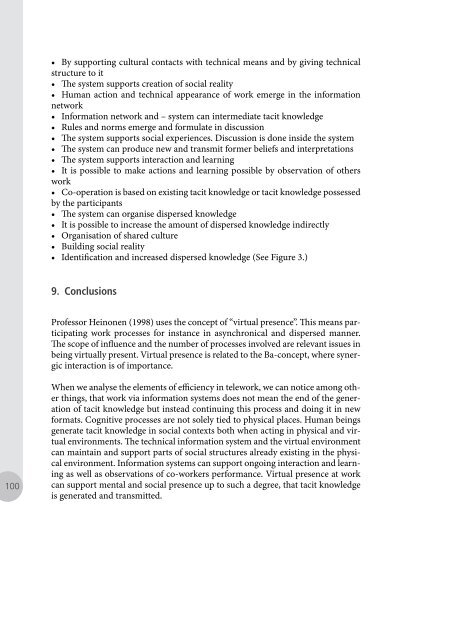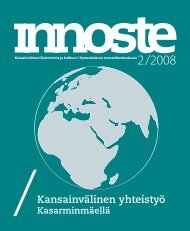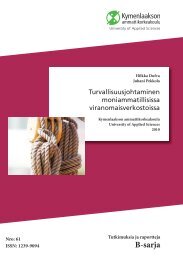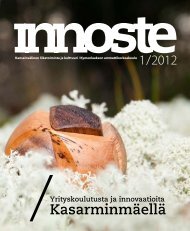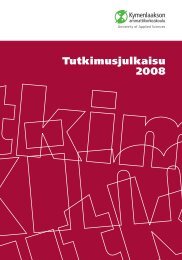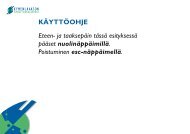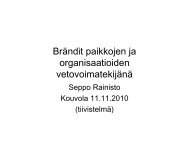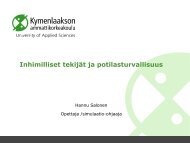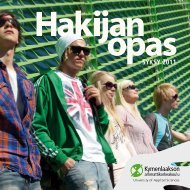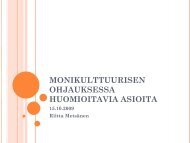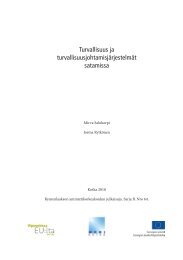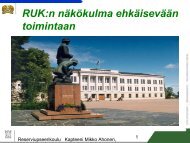Pdf-muodossa - Kymenlaakson ammattikorkeakoulu
Pdf-muodossa - Kymenlaakson ammattikorkeakoulu
Pdf-muodossa - Kymenlaakson ammattikorkeakoulu
You also want an ePaper? Increase the reach of your titles
YUMPU automatically turns print PDFs into web optimized ePapers that Google loves.
• By supporting cultural contacts with technical means and by giving technical<br />
structure to it<br />
• The system supports creation of social reality<br />
• Human action and technical appearance of work emerge in the information<br />
network<br />
• Information network and – system can intermediate tacit knowledge<br />
• Rules and norms emerge and formulate in discussion<br />
• The system supports social experiences. Discussion is done inside the system<br />
• The system can produce new and transmit former beliefs and interpretations<br />
• The system supports interaction and learning<br />
• It is possible to make actions and learning possible by observation of others<br />
work<br />
• Co-operation is based on existing tacit knowledge or tacit knowledge possessed<br />
by the participants<br />
• The system can organise dispersed knowledge<br />
• It is possible to increase the amount of dispersed knowledge indirectly<br />
• Organisation of shared culture<br />
• Building social reality<br />
• Identification and increased dispersed knowledge (See Figure 3.)<br />
9. Conclusions<br />
Professor Heinonen (1998) uses the concept of “virtual presence”. This means participating<br />
work processes for instance in asynchronical and dispersed manner.<br />
The scope of influence and the number of processes involved are relevant issues in<br />
being virtually present. Virtual presence is related to the Ba-concept, where synergic<br />
interaction is of importance.<br />
100<br />
When we analyse the elements of efficiency in telework, we can notice among other<br />
things, that work via information systems does not mean the end of the generation<br />
of tacit knowledge but instead continuing this process and doing it in new<br />
formats. Cognitive processes are not solely tied to physical places. Human beings<br />
generate tacit knowledge in social contexts both when acting in physical and virtual<br />
environments. The technical information system and the virtual environment<br />
can maintain and support parts of social structures already existing in the physical<br />
environment. Information systems can support ongoing interaction and learning<br />
as well as observations of co-workers performance. Virtual presence at work<br />
can support mental and social presence up to such a degree, that tacit knowledge<br />
is generated and transmitted.


